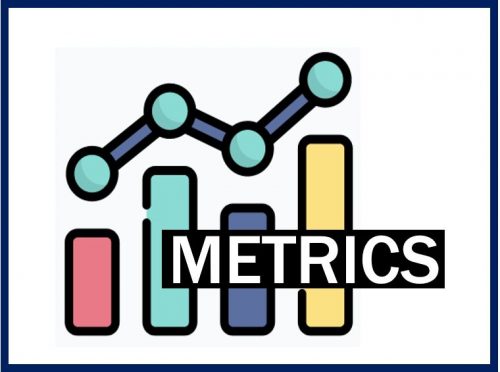2020 has been a roller-coaster experience for contact centers the world over. To stay productive amid increasing call volumes and dampened morale on both sides, several call center metrics have proven worthy of measuring.

We’re going to curate a few call center metrics. They should give you insight into how you can continuously improve agent performance and better customer service through 2021.
- Average Speed of Answer
- Average Time in Queue
- Average Call Abandonment Rate
- Percentage of Calls Blocked
- Service Level
- Average Handle Time
- Average After Call Work Time
- First Call Resolution
- Customer Satisfaction
Let’s jump straight into a more expanded view of each of the metrics listed above.
Average Speed of Answer
Average Speed of Answer (ASA) is a key metric to watch if you’re concerned with how productive your contact center agents are. It measures how long it takes for an incoming call to get routed to an agent. Please note that for ASA, we only measure the time when the phone rings at the agent’s side.
Presented in seconds, the average for most call centers is under half a minute. Beyond that and you can take it as a clue that your agents may not be as nimble or productive as possible. Consistently low ASA ties with improved customer satisfaction.
Average Time in Queue
The other side of ASA is a measurement of how long customers actually have to wait in a contact center support queue. The longer your customers have to wait just so they can voice their concerns, the more likely they’ll flake from the queue.
Keeping low average wait times ensures that more customers get through and get heard by your agents. If you’re continuously experiencing long times in support queues, consider automating issue resolution to make it unnecessary for customers to speak with agents.
Average Call Abandonment Rate
This metric is a consequence of the average time in queue experience. Each time a caller decides they don’t want to speak to your agents, you risk losing their business. It’s worth looking into why callers abandon your queues.
You can remedy an out-of-control call abandonment rate by improving your agents’ performance through training. To understand why callers are dropping out of queues, creating and automating an outbound strategy should help schedule a conversation with them at a later time.
Percentage of Calls Blocked
A blocked call happens when callers get the annoying recipient busy tone after taking their time to reach out to your agents. The more times such a case happens, the more frustrated customers you’ll accumulate.
Understanding why calls could be not getting through often always leads to discovering that agents are taking too long to serve customers. They could even use the line for personal reasons, or there could be technical reasons for it all. Either way, keeping the percentage low is key to keeping customers satisfied.
Service Level
Service level is a calculation of the number of calls answered within a specific threshold. Common to the industry is the 80/20 rule – 80% of calls answered within 20 seconds.
It’s a key metric to measure because it directly reflects how productive your agents are in real-time. It also indicates how likely customers are to have had a good experience. Long waits = annoyed callers!
You should think carefully about making agents aware that such a metric is being observed. It can motivate them. Likewise, it can cause risky behaviours like rushing through calls.
Average Handle Time
From the moment your agent picks up a new call, to the second they disconnect from the session entirely, we’ll be counting Handling Time. The average for your contact center should not be too low, such that no help is being offered to callers. It should not be too long either, as that would show inefficiencies in the support process.
Staying within the acceptable band requires that your agents are ready with the knowledge and tools to resolve caller issues quickly.
Average After-Call Work Time
Also known as Wrap-up Time, this is a measure of how long it takes for an agent to carry out tasks that resolve a caller’s issues. Such tasks often start as soon as the call ends. During the wrap-up time, your agents cannot take on a new call.
Long wrap-up times can cause customers to pile up in queues. They are a clear sign for the need to automate issue resolution or at least train your agents so they perform a wider range of tasks without referencing help center materials.
First Contact Resolution
We’ve been discussing how it would boost customer satisfaction if your agents resolved customers’ issues quickly. More important would be if the first time a customer gets through to your support center, we solved their issue so that they didn’t have to call again with the same concern.
When you have high first contact resolution metric figures, your queues are less crowded. So too will you have increased faith in the efficiency of the agents manning each node in the contact center.
Customer Satisfaction
Post-engagement surveys that directly measure whether a customer was happy with how the session went are a good way to measure CSat. If you don’t have conclusive data to determine CSat, those Net Promoter Score polls often displayed on websites can give you a hint of how happy customers are.
It doesn’t take much for a seasoned manager to gauge how productive their agents are. However, as you watch the metrics we’ve discussed, adjust your processes in order to reach the optimal productivity levels that almost always guarantee better customer satisfaction.
About babelforce
babelforce is a global cloud communications platform focused on No-Code integration and automation. It allows non-technical people to build even the most complex integrated processes for customer-facing teams, particularly in the call center.
Interesting Related Article: “Brand Tracking: Measure these 4 Metrics to Improve Your Marketing Strategy“

